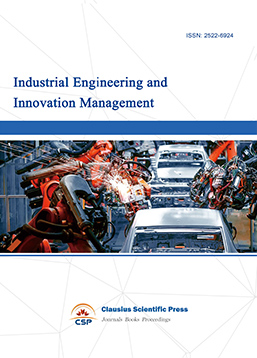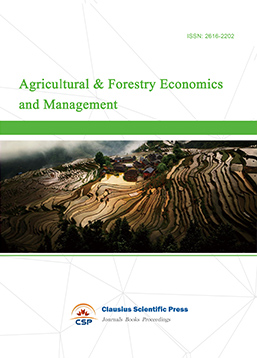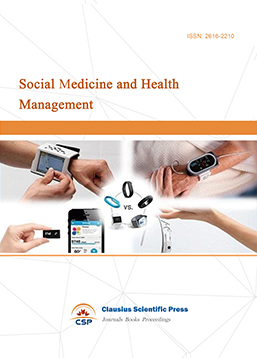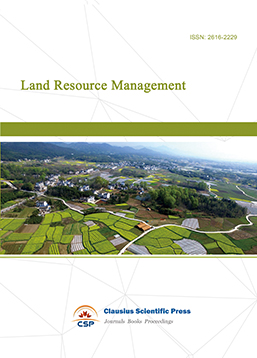Supply and demand dilemma and deep motivation of the implementation of the basic education burden reduction policy
DOI: 10.23977/socsam.2024.050118 | Downloads: 47 | Views: 1520
Author(s)
Lulu Wang 1
Affiliation(s)
1 Anhui Agricultural University, Hefei, Anhui, 230036, China
Corresponding Author
Lulu WangABSTRACT
The excessive academic burden of students is the focus of our attention nowadays, and despite the introduction of a large number of relevant policies to reduce the burden, the effect of policy implementation has not reached the expectation, and the implementation process is faced with many difficulties. Therefore, based on the perspective of supply and demand theory, we study the supply and demand relationship between the policy implementation subjects and analyze the failure to reach the effective social consensus due to the differentiation of demand, the "theater effect" of tutoring, and the government failure in education supply. In order to solve the dilemma of supply-demand mismatch and regional imbalance of educational resources, the government needs to tackle both the root and the symptoms from both supply and demand sides, to create a collaborative education environment between society, schools and families, to establish a perfect supervision, inspection and monitoring mechanism for reducing the burden, and to meet the demands of policy implementation stakeholders so as to mobilize the value rationality of policy implementation subjects.
KEYWORDS
Basic education; burden reduction policy; supply and demand dilemma; educational governanceCITE THIS PAPER
Lulu Wang, Supply and demand dilemma and deep motivation of the implementation of the basic education burden reduction policy. Social Security and Administration Management (2024) Vol. 5: 125-131. DOI: http://dx.doi.org/10.23977/socsam.2024.050118.
REFERENCES
[1] Tian Xue, Zou Hongjun. From "hierarchical management" to "collaborative governance": The discourse change of China's education burden reduction policy [J]. Hubei Social Sciences, 2023 (03): 139-148.
[2] Opinions of the General Office of the Central Committee of the Communist Party of China and the General Office of the State Council on Further Reducing the Homework Burden and Extracurricular Training Burden of Students in Compulsory Education [A]. 2020-07-24.
[3] Liu Taigang, Zeng Yanqing, Yu Xiaodou. The Resistance Transmission of Demand Differentiation and Policy Implementation: A Rooted Analysis Based on the Resistance of Education Load Reduction Policy Implementation [J]. Xuehai, 2022, (5): 135-144.
[4] Zheng Shiming, Wu Zhi. Towards Quality Equity: The Logic of Policy Changes and Transformation in Chinese Education Equity [J]. Education Research at Tsinghua University, 2018,39 (05): 29-37.
[5] Liu Wenqian. Research on the supply-demand dilemma behind reducing the burden on students in compulsory education stage [D]. Shaanxi Normal University, 2019.
[6] Dong Yunchuan, Li Fen. The logical dilemma of reducing the burden on basic education [J]. Journal of Yunnan Normal University (Philosophy and Social Sciences Edition), 2022, 54 (1): 114-121.
[7] Tu Yi, Wang Muhua. Reflection and Improvement on the Implementation of the Policy of Reducing Burden in Primary and Secondary Schools: From the Perspective of "Theater Effect". Journal of Teacher Education, 2020, 7 (1): 70-77.
[8] Han Xiaomin, Sun Yuantao. The Realistic Dilemmas and Governance Strategies of China's Load Reduction Policy Implementation: Based on the Perspective of Principal Agent Theory [J]. Contemporary Education Science, 2021, (4): 46-53.
[9] Jia Wei, Deng Jianzhong, Cai Qiyong. The game dilemma and breakthrough strategies of reducing the burden on primary and secondary school students in China from the perspective of stakeholders. China Electronic Education, 2021, (9): 51-58.
[10] Wu Kangning. Why is China's education reform so difficult [J]. Journal of East China Normal University (Education Science Edition), 2010 (12): 10-20.
| Downloads: | 6519 |
|---|---|
| Visits: | 287798 |
Sponsors, Associates, and Links
-
Information Systems and Economics

-
Accounting, Auditing and Finance

-
Industrial Engineering and Innovation Management

-
Tourism Management and Technology Economy

-
Journal of Computational and Financial Econometrics

-
Financial Engineering and Risk Management

-
Accounting and Corporate Management

-
Population, Resources & Environmental Economics

-
Statistics & Quantitative Economics

-
Agricultural & Forestry Economics and Management

-
Social Medicine and Health Management

-
Land Resource Management

-
Information, Library and Archival Science

-
Journal of Human Resource Development

-
Manufacturing and Service Operations Management

-
Operational Research and Cybernetics


 Download as PDF
Download as PDF